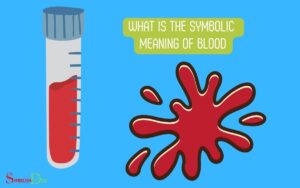The Symbolic Meaning of Signs and Subjects Is Called
Semiotics is the study of signs and symbols and their use or interpretation. Semiotics examines the ways in which meanings are constructed and understood through the use of signs, which can be words, images, sounds, gestures, or objects.
These signs stand in for something else and are fundamental in the process of communication. Semiotics explores how meanings are made and shared within cultural contexts.
- Signifier: The form of the sign (e.g., the word ‘cat’).
- Signified: The concept the signifier refers to (e.g., the animal cat).
- Icon: A sign that resembles what it signifies (e.g., a picture of a cat).
- Index: A sign that is linked to its signified by a causal or physical connection (e.g., smoke indicating fire).
- Symbol: A sign where the relationship between signifier and signified is arbitrary and based on convention (e.g., the word ‘cat’ has no inherent connection to the animal it represents).
Semiotics deciphers the hidden meanings in cultural phenomena, enriching our interpretation of the world around us.

Key Takeaway
5 Subjects Symbolic Meanings
| Sign/Subject | Symbolic Meaning |
|---|---|
| Red Rose | Love and Passion |
| Owl | Wisdom and Knowledge |
| Cross | Faith and Salvation |
| Snake | Transformation and Healing |
| Butterfly | Rebirth and Transformation |
Origins of Semiotics
The origins of semiotics can be traced back to ancient civilizations where the study of signs and symbols was already a significant part of their cultural and religious practices.
Ancient cultures such as the Egyptians, Greeks, and Chinese incorporated symbols into their language, art, and religious rituals. The understanding of these symbols was crucial for communication and the interpretation of cultural practices.
Over time, this study of signs and symbols evolved into what we now call semiotics, a field that explores how meaning is created and communicated through signs and symbols. This exploration extends beyond language to encompass visual signs, gestures, and even objects.
Understanding the historical significance of semiotics provides a foundation for comprehending its key concepts and its relevance in contemporary society.
Now, let’s delve into the key concepts of semiotics.
Key Concepts in Semiotics
This article will explore the key concepts in semiotics, including:
- The fundamental principles of signs and symbols
- The process of communication and meaning-making
- The cultural interpretation of signs
Understanding these concepts is essential for comprehending the complex nature of semiotics and its role in various disciplines such as linguistics, anthropology, and communication studies.
Signs and Symbols
In the field of semiotics, signs and symbols play a crucial role in conveying meaning and understanding communication.
Signs are elements that directly represent something else, while symbols are more complex, often carrying cultural or contextual meanings. Signs can be straightforward and easily understood, such as a stop sign indicating that drivers should come to a halt. Symbols, on the other hand, may require a deeper understanding of cultural or contextual meanings in order to be fully appreciated or interpreted. Understanding symbolic meaning allows individuals to grasp the significance behind a symbol, whether it be a religious icon, a national flag, or a piece of artwork. This deeper level of understanding can enrich our experiences and interactions with the world around us.
Understanding signs and symbols is essential for interpreting various forms of communication, including language, art, and non-verbal cues.
Semiotics examines how signs and symbols function within different contexts and cultures, emphasizing the significance of interpretation and perception.
This field delves into the relationship between signs, symbols, and the meanings they convey, shedding light on the intricate ways in which communication occurs.
Whether in literature, advertising, or everyday interactions, recognizing and analyzing signs and symbols enriches our comprehension of the world around us, offering insights into the complexities of human expression and understanding.
Communication and Meaning
Within the field of semiotics, communication and meaning are intricately intertwined, shaping the understanding of signs and symbols.
When delving into the concept of communication and meaning in semiotics, it is essential to consider the following key points:
- Interpretation: Semiotics emphasizes the importance of interpreting signs and symbols within the context of communication to derive meaning.
- Contextualization: The meaning of signs and symbols is heavily influenced by the context in which they are used, highlighting the significance of the surrounding communication.
- Cultural Influence: Cultural factors play a pivotal role in shaping the interpretation and understanding of signs and symbols, underscoring the impact of cultural context on communication and meaning.
- Semiotic Codes: Different semiotic codes, such as linguistic, visual, and gestural codes, contribute to the complex web of communication and meaning within semiotics.
Cultural Interpretation of Signs
The cultural interpretation of signs in semiotics is intricately connected to the context and meanings derived from communication, emphasizing the influence of cultural factors on the understanding of symbols and signs.
In semiotics, cultural interpretation plays a pivotal role in shaping the way individuals perceive and attribute meaning to signs within a specific cultural context.
This process involves understanding how cultural norms, values, and shared experiences contribute to the interpretation of signs and symbols.
Cultural interpretation in semiotics acknowledges that signs and symbols can hold different meanings across various cultural groups, and the understanding of these meanings is crucial in effective communication.
This highlights the significance of considering cultural diversity when analyzing signs and symbols in semiotics.
Understanding the cultural interpretation of signs provides valuable insights into how communication is influenced by cultural factors.
This discussion leads to the exploration of ‘semiotics in language’, which further elucidates the role of signs and symbols in linguistic communication.
Semiotics in Language
Semiotics in language encompasses a rich array of concepts and ideas. Symbols in communication play a crucial role in conveying complex meanings and understanding cultural representations.
Exploring linguistic signs and meanings within the context of semiotics offers a fascinating insight into the intricate nature of language and its symbolic significance.
Symbols in Communication
In the study of communication, symbols play a crucial role as carriers of meaning and conveyors of messages through language and other semiotic systems.
Understanding the significance of symbols in communication is essential for comprehending the complexities of human interaction and the transmission of ideas.
The following points shed light on the role of symbols in communication:
- Representation: Symbols represent concepts, objects, or ideas, allowing for the expression of abstract thoughts and the communication of concrete information.
- Interpretation: The interpretation of symbols varies across cultures and individuals, influencing the way messages are perceived and understood.
- Conveyance of Emotions: Symbols can convey emotions and attitudes, adding depth and nuance to communication beyond the literal meaning of words.
- Cognitive Impact: Symbols have a profound cognitive impact, shaping perceptions and influencing decision-making processes in communication.
Understanding the dynamics of symbols in communication is integral to effective and meaningful interactions.
Linguistic Signs and Meanings
An extension from the previous discussion on symbols in communication, linguistic signs and meanings, as part of semiotics in language, play a fundamental role in conveying and interpreting messages within human interaction.
Linguistic signs, such as words, and their meanings form the basis of language and communication. Semiotics, the study of signs and symbols, delves into how these linguistic signs create meaning and convey messages.
It explores the relationship between signifiers (the form of the sign) and signifieds (the concept it represents) within a given language or communication system.
Understanding linguistic signs and meanings is crucial in interpreting the intended message accurately and effectively.
It involves analyzing the nuances, connotations, and cultural contexts associated with words and phrases, highlighting the intricate nature of human language and communication.
Semiotics and Cultural Representation
The study of cultural representation within language and communication is a key aspect of semiotics, providing insight into the ways in which symbols and signs convey meaning within different cultural contexts.
This involves analyzing how language, as a system of signs, shapes and reflects cultural norms, values, and beliefs.
Key aspects of semiotics in language and cultural representation include:
- Language as a Cultural Artifact: Language reflects cultural identity, societal structures, and power dynamics.
- Semiotics in Multilingual Societies: The study of how different languages and dialects convey cultural nuances and meanings.
- Cultural Symbols and Icons: Understanding the semiotic representation of cultural symbols and icons within language.
- Translation and Cultural Equivalents: Exploring how meaning is conveyed and potentially lost or altered when translating across different cultural and linguistic contexts.
Understanding the semiotics of cultural representation in language is crucial for effective intercultural communication and sociolinguistic research. This understanding also serves as a foundation for comprehending symbolism in art.
Symbolism in Art
Symbolism in art is a powerful tool for conveying deeper meanings and evoking emotions through the use of symbolic elements and imagery.
Artists utilize symbols to communicate complex ideas, feelings, and concepts that may not be easily expressed through literal representation.
Through the deliberate selection and arrangement of symbols, artists can imbue their work with layers of significance, inviting viewers to interpret and engage with the piece on a profound level.
Whether through religious, mythological, or cultural symbols, art serves as a visual language that transcends the limitations of verbal expression.
Symbolism in art allows for the exploration of universal themes and the portrayal of the human experience in ways that resonate across diverse audiences, fostering a deeper connection and understanding of the world around us.
Cultural Semiotics
Utilizing cultural semiotics in art deepens the layers of significance and invites viewers to engage with the work on a profound level, fostering a deeper connection and understanding of the world around us.
Cultural semiotics involves the study of how different cultures interpret signs and symbols, influencing the meaning and interpretation of artworks.
When applied to art, cultural semiotics offers a rich and diverse framework for analysis, allowing for a more comprehensive understanding of the art piece and its cultural context.
This approach enables artists to convey complex cultural narratives and encourages viewers to critically reflect on their own cultural perspectives.
By incorporating cultural semiotics into art, the following benefits are achieved:
- Enriches the interpretation of art by considering cultural contexts.
- Encourages a deeper understanding of diverse cultural perspectives.
- Provides a platform for cultural dialogue and exchange through art.
- Enhances the appreciation of art as a reflection of societal values and beliefs.
This profound understanding of cultural semiotics in art sets the stage for exploring its application in advertising, where similar symbolic meanings play a crucial role in consumer behavior.
Semiotics in Advertising
Semiotics in advertising plays a pivotal role in influencing consumer behavior and shaping brand perceptions. It involves the study of signs, symbols, and their meanings in the context of advertising messages.
By understanding the symbolic meaning behind signs and subjects, advertisers can strategically design campaigns to evoke specific emotions and associations in consumers. This can ultimately influence purchasing decisions and brand loyalty.
| Sign/Symbol | Meaning in Advertising |
|---|---|
| Red color | Excitement, passion, urgency |
| Dove | Peace, purity, gentleness |
| Lightning bolt | Power, speed, energy |
For instance, the use of red in a logo or packaging can convey excitement and urgency, while incorporating a dove symbol can evoke feelings of peace and gentleness.
By leveraging semiotics in advertising, brands can effectively communicate their desired message and connect with their target audience on a deeper level.
What is the Importance of Symbolic Meaning in Early Childhood Development?
Symbolic meaning in early childhood development plays a crucial role in shaping preschoolers’ symbolic thinking abilities. It helps children understand abstract concepts, develop language skills, and enhance problem-solving abilities. Through symbolic play and activities, preschoolers can grasp the world around them and express their thoughts and emotions effectively.
The Impact of Semiotics
The understanding and application of signs and symbols in advertising not only shape brand perceptions but also wield significant influence over consumer behavior.
The impact of semiotics on advertising cannot be overstated, as it directly affects how consumers interpret and respond to marketing messages.
The following points highlight the significant influence of semiotics in advertising:
- Brand Identity: Semiotics plays a crucial role in constructing and communicating brand identity, helping to differentiate one brand from another.
- Consumer Perception: The use of signs and symbols influences how consumers perceive a brand, its products, and its values.
- Emotional Connection: Semiotics can evoke emotional responses from consumers, establishing a deeper connection between the brand and its audience.
- Purchase Decisions: The interpretation of signs and symbols can sway consumer purchase decisions, making semiotics a powerful tool in advertising strategies.
Conclusion
The study of semiotics delves into the origins, key concepts, and applications in language, art, culture, and advertising.
It explores the symbolic meaning of signs and subjects, highlighting the impact of semiotics in various fields.
Through semiotics, the understanding of symbolism and communication is enhanced, making it a valuable tool in analyzing and interpreting the intricate layers of meaning in our world.






